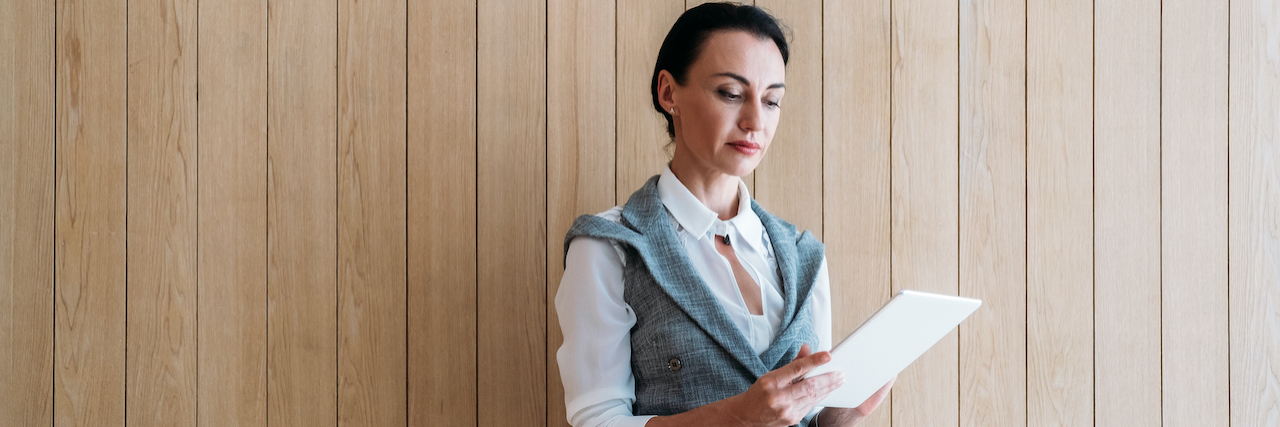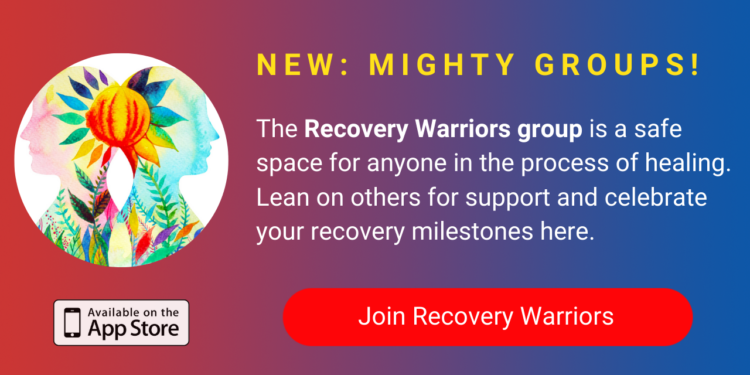On Monday I was presenting to a room full of investment bankers and by Friday I was having a feeding tube placed in my nose. If I didn’t live that sentence myself, I would be skeptical of its truth. Since it is 2020, your first thought may be a COVID-related complication, but that would be incorrect. I went from the boardroom to an inpatient treatment facility… for anorexia…within three days. Here’s my story.
As early as the age of 9 I thought there was something wrong with my body. I was bigger than all my friends and I overheard my parents talking about it. The problem solver that I am, I asked my parents if I could join Jenny Craig. After all, the commercials made it look like just what I needed to lose the weight and look like everyone else. My parents supported the idea, so much so that my dad even joined with me. In my mind, this was just confirming what I already thought: there really was something wrong with my body.
Jenny Craig didn’t work out. I mean, try keeping a 9-year-old on frozen meals when all her friends are having pizza and cake at birthday parties. So, I continued to be larger than all my friends until I became so ashamed and tired of feeling out of place that I went on a diet on my own when I was 13. At the time, fat free diets were all the rage, so I simply started by grocery shopping with my mom and picking out low fat and fat free alternatives to my favorite foods. I found a book that gave me the nutritional info of everyday foods and some restaurant menus and began to live by that. This all started in February.
By spring break, I had lost some weight and was already more confident in a swimsuit. By May, I reached my goal weight. My diet “worked” and everyone noticed. I received compliments from everyone, even teachers. My dad asked me to start packing his lunch so he could lose weight, too. And for the first time ever, I was able to swap clothes with my friends. I was in heaven. There was only one problem: I didn’t know how to maintain my lower weight and go back to eating regular food. I had to accept that my diet was now low fat and fat free only items, but given my elation with my new life, I was totally OK with that.
By the time I was 15, an intense fear of fat had set in and tears at the dinner table were not uncommon if I thought I was being served something that didn’t fall in my “safe” food groups. I wouldn’t eat at restaurants that I didn’t have the nutritional info on and I routinely ate the same foods day after day. Depression began to set in as my lower weight was not new anymore and I realized that my eating habits had started to impact my social life. The only thing that made me happy was getting to a lower number on the scale and the month after I turned 16 that number was so dangerously low that my parents took me to the only children’s hospital nearby with an eating disorder program to have me evaluated. They admitted me the same day to their inpatient unit. My parents even had to go home and pack for me because none of us thought it was so bad that I would have to stay there. I later came to understand that ignoring problems was common in my family.
This was in July and I wasn’t fully released from the program until the spring of the following year. I spent the better part of my junior year of high school in an eating disorder treatment facility at various levels of care, but I finally emerged in full recovery because I wanted to grow up, go to college and live my life. And that’s exactly what I did, never speaking of those years of my life again. My parents didn’t talk about it. I never told new friends about it. Even my husband only knew bits and pieces of the story.
After college, I dove into my career, marriage and motherhood. I found acceptance in all those areas that filled the gap of my lack of self-acceptance. I was always exceeding other’s expectations of me and it felt great. Before I was 30, I had gotten married, had two children, received six promotions, relocated four times and was making over $100,000 a year. Then by 33, I was a Vice President, divorced, but in a committed long-distance relationship with someone I thought would be husband. By 36, that relationship had ended, but I was running the division of a company. Then at 37, I was still running that division, but I also had fully relapsed back into my eating disorder and again needed inpatient treatment. This time, though, I wasn’t going to a children’s hospital and I wasn’t just missing school. I had to tell my boss, the CEO of the company, that I needed time off. I had to tell my kids what I was struggling with and go six weeks without seeing them because they couldn’t visit me in the hospital because of COVID. The stakes were much higher than when I was 16. It was the hardest decision of my life.
So why am I telling this story now, after all these years hiding my past? I’m sharing because I’ve never read about or met another executive who has an eating disorder. I’m sharing because female executives are scrutinized in a way that male executives never will be. What we wear, how our hair looks, if we wear too much or too little make-up. These are all conversations I’ve heard about female executives that I’ve never heard about their male counterparts and these conversations cause disordered eating and exercise habits that can turn into eating disorders. I’m sharing because I still struggle and there’s a term I learned in treatment, “secrets keep you sick.” I don’t want to keep this a secret anymore because if my story can help even one other person, it is worth sharing.
Getty image via Tijana Simic


